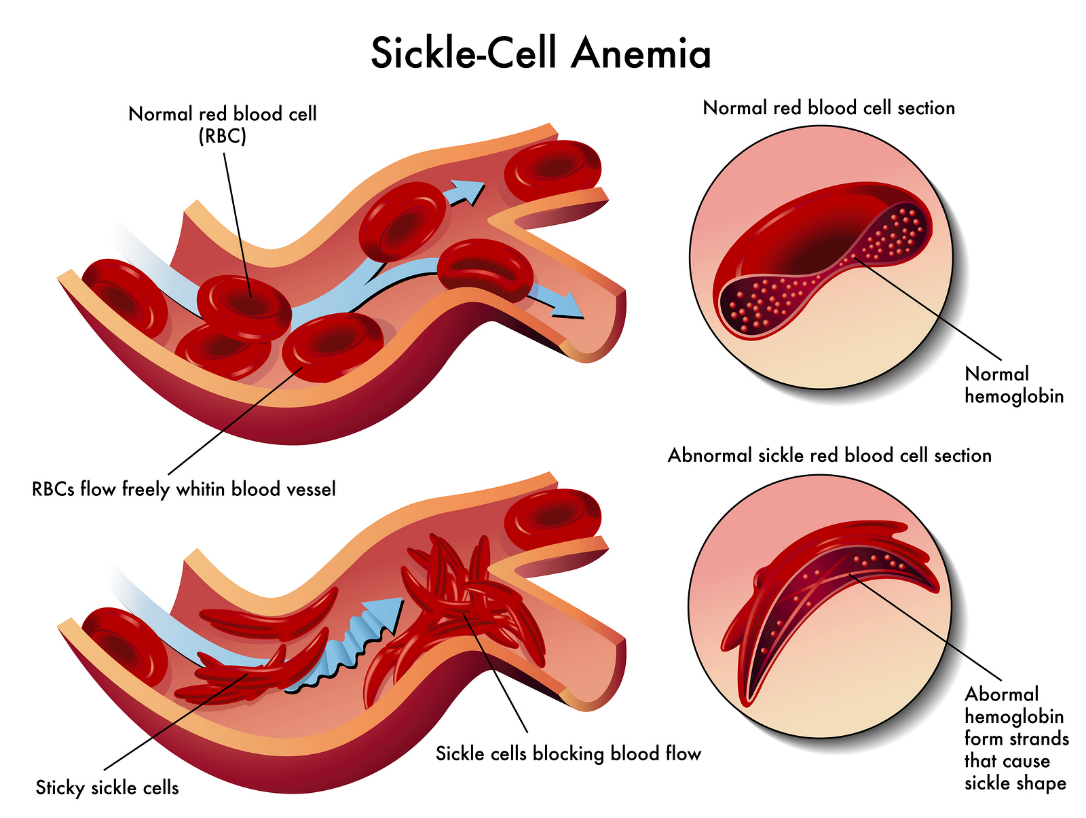Signs and symptoms of sickle cell anemia
Signs and symptoms of sickle cell anemia
Sickle cell anemia is an inherited condition that occurs due to a group of disorders called sickle cell disease (SCD). In this condition, a child inherits a faulty gene making red blood cells brittle. In healthy people, red blood cells (RBCs) live for 90-120 days, but in those living with SCD, RBCs can barely survive for 10-20 days.
Since RBCs cannot survive for long in these children, it causes severe anemia. In addition, it means disruption in oxygen supply to various body organs.
It is called sickle cell anemia, as the shape of RBCs in those living with the disorder is C-shaped or resembles a sickle when seen under the microscope. These RBCs are not just brittle; they also readily get stuck in blood vessels, causing a clog. As a result, the condition causes serious health complications.
How common is the condition?
Anyone planning to have a child must be aware of the condition since it is not a rare disorder. Studies suggest that there are about 100,000 Americans living with SCD.
However, this risk is disproportionately high in people of sub-Saharan, South Asian, Middle Eastern, and South American descent. For example, it appears that SCD occurs in 1 out of every 365 births in African-American people.
Sickle cell anemia (image source: Wikimedia Commons)
How is it diagnosed?
Sickle cell anemia is diagnosed with the help of blood tests. Even a simple test like a blood smear test can help diagnose the condition in most cases. All newborns undergo a blood test for sickle cell anemia in the US. Thus, most people living with sickle cell anemia are diagnosed at birth.
However, this does not mean that all are diagnosed at birth. For many, the diagnosis is delayed. Firstly, it is worth understanding that there are many subtypes of SCD, and not all are equally severe. Moreover, it is worth understanding that no test is 100% accurate; thus, some might be diagnosed later when they develop signs and symptoms.
Additionally, it is worth understanding that in the US, almost 20% of children are born at home. These children are less likely to undergo various blood tests that are pretty standard in clinics.
All this means that the diagnosis of the condition is delayed in many instances, hence the importance of knowing its signs and symptoms.
Signs and symptoms of sickle cell anemia
It is vital to understand that patients are symptomless during the first six months of their life, as during this period, fetal hemoglobin predominates. Thus, defective RBCs start becoming predominant slowly after that, and signs and symptoms of the condition emerge.
• Anemia. Since in the condition RBCs have a much shorter life span, it means that anyone living with the condition will develop anemia. Anemia is the primary symptom of the disease. It will cause yellowish-color skin. The condition must be identified early, as any diagnosis delay will also affect growth and development.
• Higher risk of infections. Those living with SCD have poorly working spleen and low immunity. Thus, such children and adults are prone to infections. However, vaccinations may help reduce the risk of certain infections like pneumonia in such cases. In addition, some of those living with the condition may require constant antibiotic therapy.
• Body aches. They develop slowly and affect patients for all their life. In children, it means increased crying. Fortunately, pain crises are not constant and may be less severe in many instances.
• Swelling of hands and feet. It occurs due to blockage of blood flow.
• Frequent infections. Infants living with SCD are more likely to develop various infections, hence the importance of vaccination in this population group.
• Vision issues. It appears that in SCD, small blood vessels, that are capillaries, are more likely to be blocked, causing retinal damage and thus causing various vision problems.
Those living with SCD are also more likely to develop various other complications like a vaso-occlusive crisis, acute chest syndrome, pneumonia, pulmonary hypertension, stroke, pulmonary embolism, and renal complications.
Fortunately, due to the more effective use of medications, vaccines, and antibiotics, most of those diagnosed with SCD can expect to grow into adults. However, it is worth understanding that SCD is associated with a significantly reduced lifespan.


